Friction on an inclined plane
To show you how to calculate the friction on an inclined plane, we will use the diagram below. The diagram shows an object of mass m on an inclined plane.
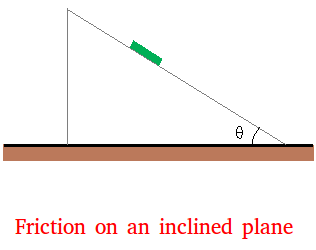
After trial and error, we realize that if the angle is slightly higher
than 30 degrees, the object will slide down the incline. However, when
the angle is 30 degrees, the object is on the verge of sliding.
First important concept when dealing with friction on an inclined plane
Identify the forces
Since the object does not slide when the angle is 30 degrees, the force of friction is holding the object in place. It is usually directed opposite to the direction of movement. We show this force below but we use a green dot to represent the object to facilitate the reading.
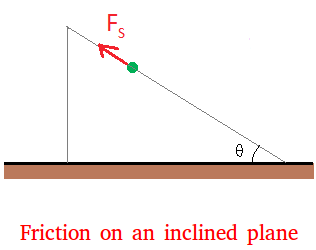
When the angle is greater than 30 degrees, the object slides down. What
force causes the object to slide? It is the force of gravity since no
hands are pushing the object down.
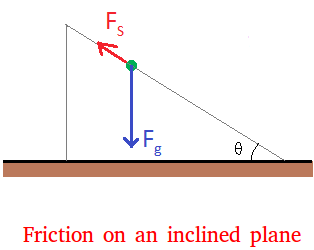
Whenever there is a weight, there is a normal force and we show the normal force with an orange vector.
Notice also the other location of the angle. We are claiming this is the same angle as the one at the bottom right corner.
We will prove this in another lesson.
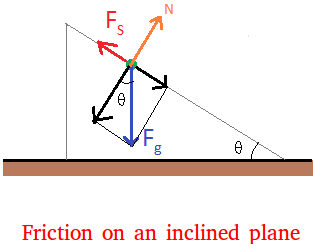
Let's add a few more stuff that will help us to solve the problem.
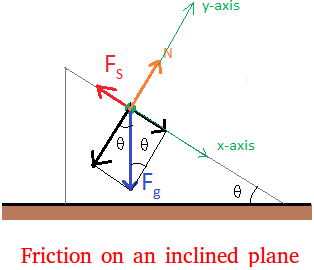
Second important concept when dealing with friction on an inclined plane
Apply Newton's second law:
F is the sum of all forces.
If we apply Newton's second law along the y-axis, we get:
When the object is on the verge of moving, it is not moving, so the acceleration is equal to 0.
N - big black vector = m × 0
N - big black vector = 0
We can use trigonometric identities to find the big black vector.
By the same fashion,
N - cos θ×Fg = 0
N = cos θ×Fg
If we apply Newton's second along the x-axis, we get:
sin θ× Fg - Fs = 0
sin θ× Fg = Fs
Now we can use the formula fs, max = μs × N
μs = tan θ
μs = 0.5773
This lesson about friction on an inclined plane is a little challenging.
Make sure you master trigonometric identities, vectors, and normal force before reading this lesson.